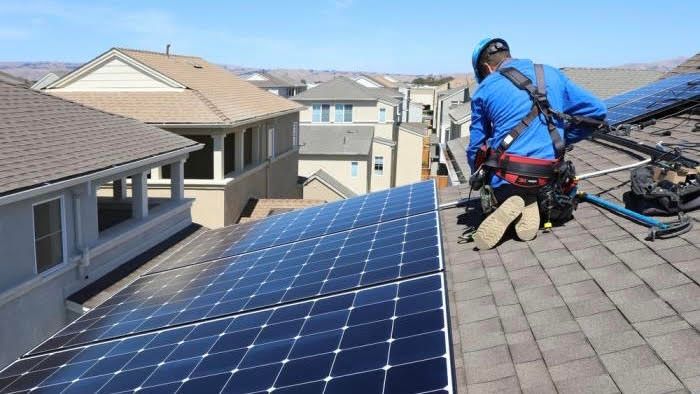California’s new residential solar customers will be compensated differently for the energy they produce and use under the state’s modernized solar tariff system. Taking effect Saturday, the new net energy metering rules will apply to residential customers installing rooftop photovoltaic systems after April 14 in the Southern California Edison, San Diego Gas & Electric and Pacific Gas and Electric service areas. Municipally owned and operated LADWP is not affected, nor are existing rooftop solar owners.
Under the new rules, utilities will pay solar customers for the electricity they export to the grid based on a value that is now determined by the avoided cost of a utility having to buy clean energy somewhere else. They also will bill customers for the electricity they receive from the utility based on time of use.
Both changes are designed to improve the electrical grid’s reliability during times of peak demand and encourage the adoption of battery energy storage systems that can send electricity back to the utility when it is most needed.
When the California Public Utilities Commission, or CPUC, adopted the changes in December, it said they were necessary to maintain grid power during early evening hours of high electricity demand to help meet its climate goals. Despite an abundance of sunshine that has made California the largest adopter of solar power nationwide, photovoltaic power generation stops when the sun goes down. According to the commission, the state’s power grid experiences a clean energy shortfall in the evenings, forcing many utilities to rely on fossil fuels to meet electricity demand after dark.
“The state wants more Californians to reap the benefits of solar-powered batteries,” said Suzanne Leta, head of policy and strategy for the solar panel and battery storage company SunPower, based in San Jose. “At the same time, the state recognizes that when more Californians have solar-powered batteries, those batteries can be used for many different things that benefit the grid as a whole.”
Home battery systems store energy generated from rooftop solar during the day until it is needed at night and can also provide homeowners with backup power in case of a power outage. At an average cost of $15,000 in California, however, just 15% of current rooftop solar customers also have a system to store solar energy in on-site batteries. SunPower estimates that more than 40% of solar installations in California could be paired with storage in just a few years.
The CPUC expects an average residential customer who installs solar to save $100 per month on their electricity bills. Average residential customers who pair solar panels with battery storage are expected to save about $136 per month.
California first implemented its net energy metering program in 1997 to help drive residential solar adoption by allowing customers to financially benefit from the excess electricity they generated. The state benefited in turn by reducing demand on the electric grid by as much as 25% middays when the sun is shining.
To help reduce greenhouse gas emissions from electricity generated by fossil fuels, the commission hopes to incentivize more rooftop solar customers to also install battery storage and export excess energy in the evenings when demand is high and the grid is unable to meet all its power needs with renewables.
Under the new rules, solar power customers can also size their rooftop systems to 150% of their current electricity usage to accommodate electrification of appliances and personal transportation in the future.
To further nudge Californians toward electrics, the new net energy metering program also creates a market transition credit that allows customers to pay back their systems in less than ten years. The credit is worth $5.25 per kilowatt for customers who go solar in the program’s first year, and declines by 25% for subsequent years. Customers are guaranteed the bill credits for nine years, which is how long the CPUC estimates it will take to pay off their systems.



